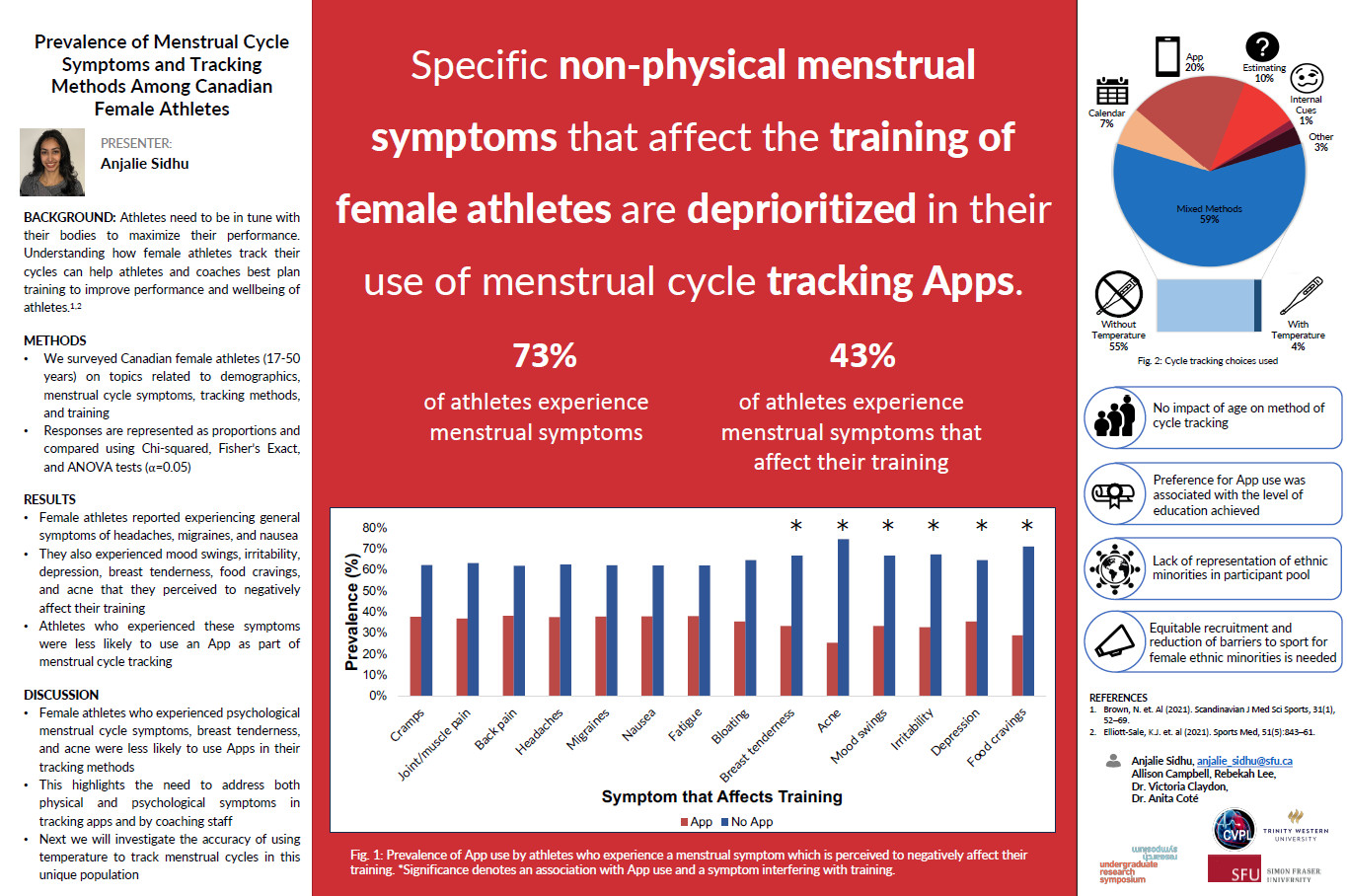Prevalence of Menstrual Cycle Symptoms and Tracking Methods Among Canadian Female Athletes
Main Article Content
Abstract
Purpose: To better understand how Canadian female athletes are tracking their menstrual cycles and how that differs by symptoms experienced, age, and level of education. Methods: A survey was distributed to Canadian female athletes via social media channels, sports organisations, and snowball sampling. The survey inquired about age, ethnicity, level of education, and menstrual cycle history, symptoms, and tracking methods. Results: The survey was completed by 497 athletes aged 17-50 years (75% White/European). Symptoms including headache (75.4%), migraine (55.8%), nausea (65.8%), mood swings (92.0%), irritability (94.0%), depression (79.9%), breast tenderness (86.9%), food cravings (87.9%), acne (84.9%) were prevalent in athletes. A majority of athletes experiencing symptoms intentionally tracked their menstrual cycle. Those who experienced symptoms of headaches, migraines, and nausea, favoured use of tracking methods that did not include an app (p<0.05). Similarly, symptoms felt to negatively impact training, including mood swings, irritability, depression, breast tenderness, food cravings, and acne, were also associated with a preference for non-app-based tracking methods (p<0.05). Tracking method varied with the highest level of education achieved with some preferring using an app tracking method. Age did not significantly affect choice of tracking method. Conclusion: General symptoms, symptoms affecting training, and education level were associated with tracking method(s) utilised by female athletes. Future research should investigate the accuracy and perceived benefits of menstrual cycle tracking methods in the female athlete population and include ethnically diverse populations.
Article Details

This work is licensed under a Creative Commons Attribution-NonCommercial-NoDerivatives 4.0 International License.

